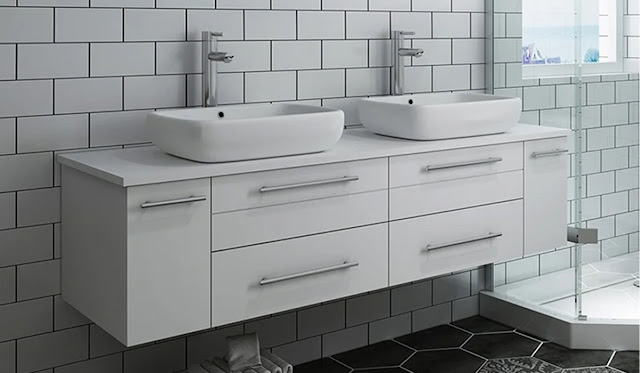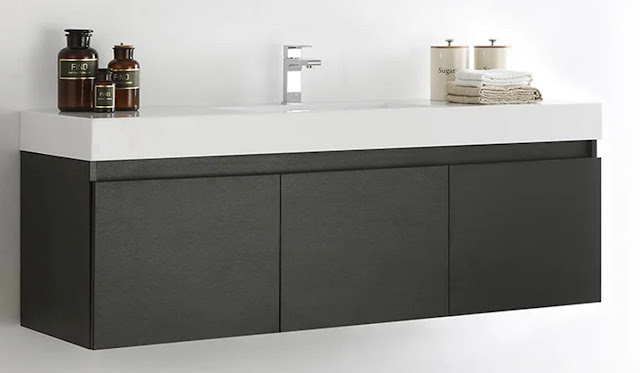When it comes to bathroom renovations, you may be surprised to learn that many agree the number one must-have item is a new vanity. As one of the main features of any bathroom space, vanities do so much more than house your sink. They provide storage, offer a countertop for decor or hygiene products, and they also hide unsightly plumbing. Replacing your bathroom vanity with a newer model is a great way to instantly transform the space, and there are plenty of affordable, high-quality vanities available to choose from that will work well with any design trend. Ranging from antiquated or vintage to sleek and modern, vanities set the tone for the rest of the furnishings and color palette in your bathroom, so it’s key to choose one that’s stylish as well as functional. But what about wall-mounted vanities? Are they just as easy to install as vanities that rest on the floor? Though wall-hung vanities may seem like more of a challenge, adding this type of modern feature doesn’t have to be stressful. By following this foolproof wall-mounted vanity installation guide, you can easily and expertly install a new vanity for a seamless bathroom upgrade.
First: Weigh Your Options
The amount of wall-hung vanity types and styles available may overwhelm you at first, which is why it’s wise to focus on the individual elements as you weigh your options. Are you replacing a vanity in your master bathroom? If so (and if you have the room for it), it’s probably best to choose a double vanity with space for dual sinks. In a half-bathroom, it makes more sense to choose one that is proportional to the space, like this wall hung modern bathroom vanity. This is also the stage where you’ll want to consider things like color, hardware, and function. Do you need your vanity to come with plenty of storage? Will your new vanity complement the flooring and fixtures? Keep in mind that vanities often act as the unifying design piece for the entire bathroom, so make sure your final choice is on-trend and matches your set color palette.Second: Remove the Existing Vanity
The next step is to make space for your new vanity by removing the old one. Begin by locating where the water valves are, which are typically beneath the sink, and turn off the water supply. It’s critical to turn on the existing faucet after doing so, as any built-up water pressure in the pipes will be released. Next, disconnect the water lines from the valves with an adjustable wrench. You’ll likely need to cut the caulk or sealant that connects the sink’s backsplash to the wall, which will allow you to lift and remove the existing sink or vanity top. Finally, you can remove the screws that are holding the vanity to the wall and pull the vanity out.
Third: Repair and Repaint the Wall
It’s usually inevitable that you’ll damage a wall during the process of removing the old vanity. If this happens, don’t panic! You can quickly repair surface defects with a putty knife. After repairing any holes or knicks in the drywall, you can then use a paint brush to touch up the wall. Once the wall looks good as new, you will be perfectly set up to install the replacement vanity. Fourth: Install Your New Vanity
The final step in our vanity installation guide is to – you guessed it! – mount your new vanity on the wall. After measuring and marking where the studs are on the wall, you’ll want to make sure you have an extra pair of hands to help you mount the floating vanity. You can use buckets or wooden slats to raise the vanity to the right spot. Once the vanity is lined up properly, you can drill screws into the wall’s studs. Following this, it’s time to secure the vanity top, drawers, sink faucet, and reconnect the water supply. With everything in place, you can finish off the look of your new wall-hung vanity with decorative elements like houseplants, candles, or sculptures – or add practical items like a toothbrush holder, soap dish, or tissue box.
Looking for other additional ways to upgrade your bathroom? Here are some of our favorite indulgent ensuite bathroom ideas that will take any space to the next level.





.jpg)









